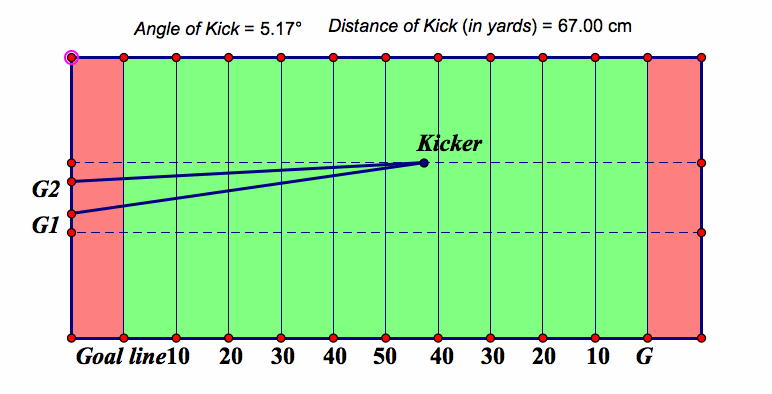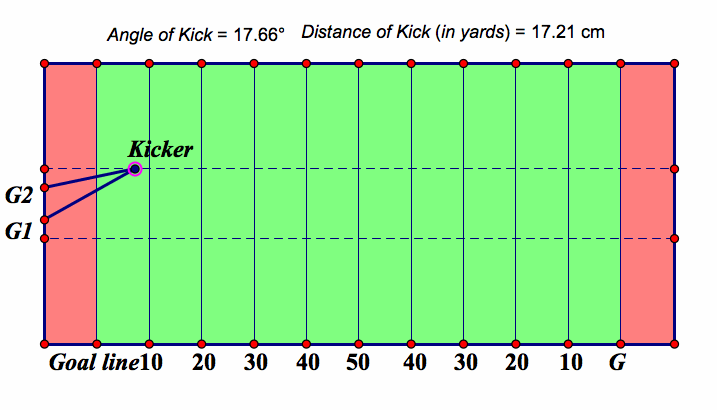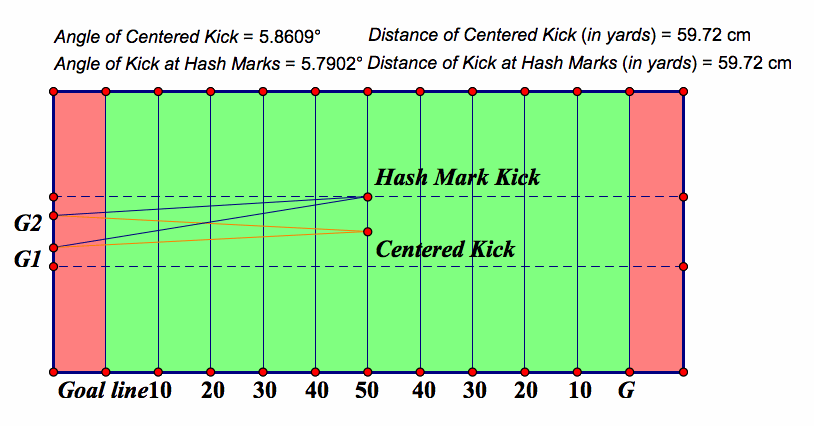
NCAA Football Field Goals Investigation
by
Lizzy Shaughnessy

NCAA Football Field Goals Investigation
by
Lizzy Shaughnessy
Assignment 6
A few years ago, the NCAA changed the width of the uprights on a football field. The new rule made the uprights 5 feet narrower than they used to be. Many uninformed announcers commented about how hard it was to kick a field goal from the hash marks. If a play ends outside of the hash marks on the field then the next play begins from the nearest hash mark. Announcers would comment that a team should take a penalty to move the kick further back so that the kicker has a better angle. This assignment will show that the announcers claim is not mathematically correct.
Important Information:
Length of Football Field: 120 yards
Width of Field: 53 1/3 yards
Width of Hash Marks: 13 1/3 yards
Width of Goalposts: 6.2 yards
Click here for a GSP file that, for any kick on a hash mark, will give the distance of the kick.
The longest field goal attempted in NCAA history was 67 yards. The following screen shot from GSP shows the angle of this kick would be approximately 5 degrees.

The shortest feasible field goal would be just over 17 yards if the ball was placed inches from the goal line (the end zone is 10 yards and the kicker is about 7 yards from the line of scrimmage). The following screen shot from GSP shows the angle of this kick would be approximately 17 degrees.

As the distance of the field goal gets shorter, the angle created by a goal, the kicker, and the other field goal increases. So the announcer's claim that a longer kick will make for an easier kick is clearly untrue. It would be more beneficial for a team to down the ball in the middle of the field. The following screen shot shows two kicks from approximately mid field. The kick from the hash marks is la bled in blue and the kick from the center of the field is labeled in orange. The kick at the middle of the field has a slightly better angle than the kick from the hash marks.
